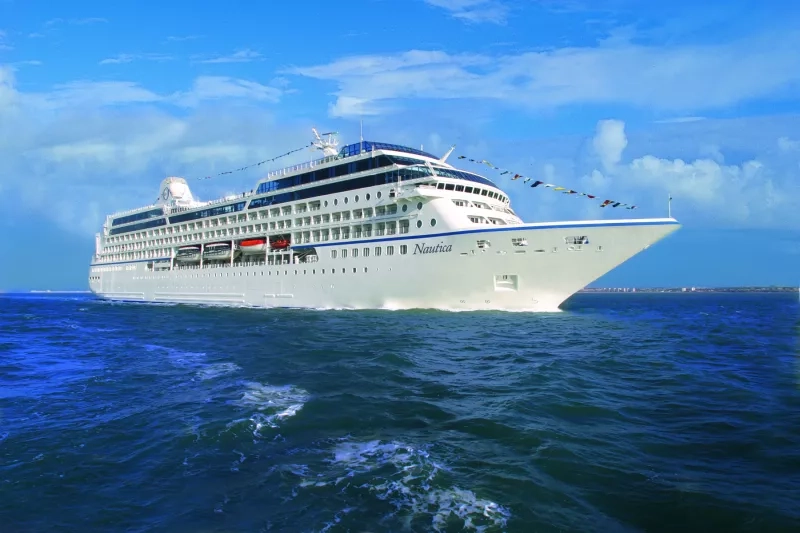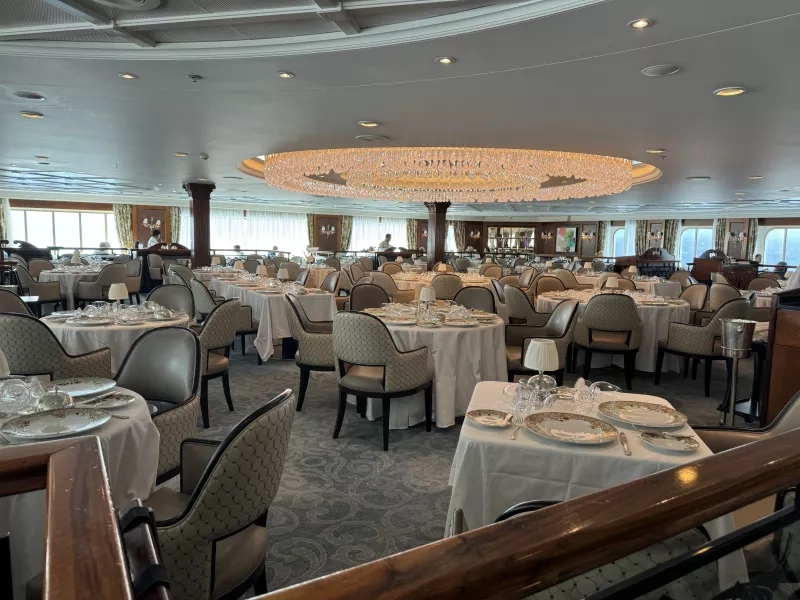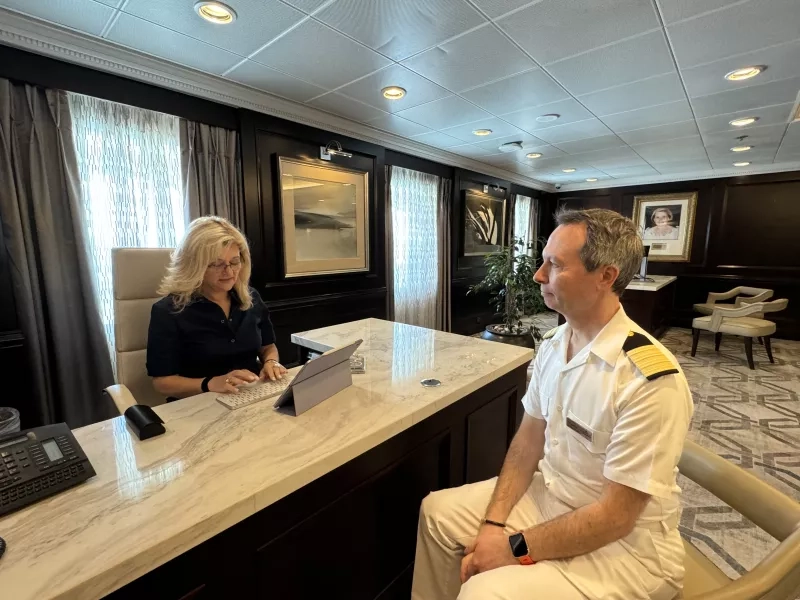
We go behind the scenes of a small ship luxury experience
5 Minute Read
Raffaele Saia steps up to a pair of non-descript white doors marked “Employees Only” and holds them open.
“This is strictly off-limits, normally,” he explains, his eyebrows wagging in an expressive Gallic way, “but you asked to see what it’s really like to run a cruise ship. Entrez-vous.”
And with that, we leave behind the calm and luxury of the Oceania Nautica’s passenger experience and pass into another world – the hyper-efficient and bustling yet invisible village of chefs, bakers, dishwashers, cleaning staff and mechanics who make cruising holidays a seemingly effortless experience.
The heart of the ship
We breeze past staff undergoing training as we head deeper into the working heart of the Nautica, on a recent sailing from Boston to Bermuda with CAA North & East Ontario.
Raffaele explains his role as we navigate our way down hallways and past offices. As travelling executive chef, the Frenchman oversees the logistics of food supply and cuisine on several ships in multiple ports.
The Nautica is one of Oceania’s eight small luxury ships – with just 647 passengers, it feels more like a super-yacht – but that still requires 400 staff to take care of every need, including 68 chefs and cooks.

“We try to keep to traditions in each restaurant,” he says, pausing to smile and chat encouragingly with a junior cook, “so when you’re talking about making baguettes, you need to understand the traditional palette. We can train staff to have that palette…but we have a French chef training them. If you go to (Italian specialty restaurant) Toscana, the pasta of the day is created by an Italian chef.”
We finally arrive in his domain, an industrial kitchen spanning nearly the width of the ship that is designed so well, not a square centimeter is wasted space.
First stop is the garde-manger, where three pantry chefs expertly chop vegetables for the countless salads on each menu and in the buffet. Next, we stop by the fish monger and butcher stations, where portions are prepared fresh.
There’s also a saucier, dedicated to making delicious concoctions of all kinds and one soul whose entire occupation is washing, peeling and prepping hundreds of potatoes every day.
The bakery is equally impressive: a specialty bread oven operates three times a day in a corner next to what seems like a football field of prepped pastries and cakes.
Raffaele points to a shining tap and rubber hose connected to the far wall.
“That tap has water that comes out at exactly 27C. That ensures the baguettes and croissants are always perfect.”
The science and art of provisioning
It turns out that being out at sea is no barrier to fine dining. French-sourced butter is flown in from a warehouse in Barcelona just for the croissants, while flour for baguettes and bread comes from France. Pork, veal, poultry and lamb originate from the U.S. or New Zealand, while fresh fruits and vegetables as well as fish are bought when the ship is in port.
“Everything is made on board,” he says, holding up one finger. “Except for English muffins and bagels. We have the recipe,” he clarifies, “but purchased bagels are more consistent.”
Anticipating what passengers want or need is part science, part art. Special orders and dietary restrictions are a known quantity before setting sail, and are dealt with daily through a system of orders for the kitchen featuring the passenger’s name and photo But there are always last-minute changes, sudden runs on a certain kind of meal or locally purchased produce that makes a guest appearance on the menu.
The menus change every 14 days, with chefs adding new dishes, often reimagining established recipes, Raffaele says. “We try to get back to classic things and make a new style. Everything had been invented, so you must think out of the box.”
Cruise ship chefs also take inspiration from their travels, with Raffaele encouraging his chefs to try local cuisine and flavours.
“When you eat something that is made in the original restaurant, that’s ground zero. I tell them to eat local, get the authentic recipe, ask about the flavour.”
Leading the way back through the galley, past wait staff hand-polishing hundreds of glasses and up a set of stairs, we pop up in the Grand Dining Room. There, pristine white tablecloths and gold-embossed Versace plates are being laid for the evening.
Travellers, not tourists

Waiting for us is Claudio Melli, the ship’s Italian general manager and veteran of a lifetime at sea, having started as a busboy on Princess Cruises.
As the maestro overseeing the working of the ship, Claudio admits he’s seen it all on cruises through the Caribbean, the U.S., Pacific, Australia, South Africa, Europe and Asia, as well as stints on shore. (During the Arab Spring in the early 2010s, he was the only European left at the Middle East’s Intercontinental Hotels after everyone else fled, giving him what he describes as “an MBA in survival.”)
Working on back-to-back cruises is less dangerous than that experience, he says, but not less busy.
“The day of the week doesn’t matter much, it’s what’s happening on the day that matters. We try to accommodate as much as we can within limits. I remember we were in Asia and a passenger was on the Dr. Pepper Diet. The local suppliers had no idea what that was,” he laughs.
Although he says he doesn’t get a lot of truly unusual requests – “people are very particular about pillows” – most Oceania passengers are what he calls seasoned travellers rather than tourists. They understand the give and take of life at sea and in many cases, book back-to-back cruises lasting months.
On a recent trip, for example, a tourist new to cruises complained after rough weather meant the ship had to skip one port of call for safety.
“She felt she should have been part of the decision-making process. Not everyone rolls with the punches,” Claudio says philosophically. “But travellers see lemons and make lemonade.”
Managing a large staff even on a small ship is a feat in itself, he admits, yet “everyone is here because they want to be here.”
“This is a small community with all the personality types. We have 38 nations represented in our staff, like a little United Nations,” he says, as we walk through the restaurant where he greets employees by name. His phone goes off and he gives a brief, apologetic smile then offers one last thought about life at sea before he rushes away.
“For me, the best part is seeing someone grow in the job. This industry gives you opportunities to travel and understand the world,” he adds, “and it attracts incredible people.”
Visit a CAA Travel Store or pop into our online portal to learn more about cruising or to book travel.
Want to read more tips and stories about cruising? Visit CAA Magazine for articles on tips, what to know before you cruise, why you need travel insurance for cruises and even first-hand accounts.




